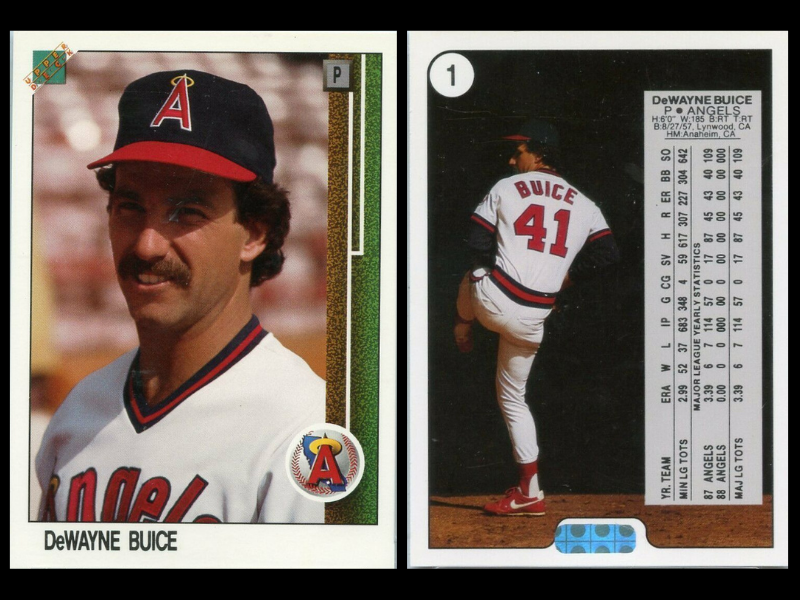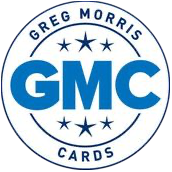In 1988, Paul Sumner and Bill Hemrick hit a major obstacle on their way to starting the Upper Deck Company.
They wanted to manufacture a better baseball card. One that looked better than cards made by Topps, Fleer, and Donruss, and also one that wouldn’t be as easy to counterfeit. By the mid-1980’s, counterfeit baseball cards were a big problem. Pete Rose’s 1963 Topps rookie, Don Mattingly’s 1984 Donruss rookie; fake cards were all over the market.
Sumner and Hemrick had a solution to the counterfeit issue involving a white light hologram, plus they had a color separation process that could produce baseball photos that would stun collectors. They knew they had a baseball card design that would revolutionize the hobby, both because of its appealing presentation and its relative security measures.
The problem was they didn’t have license to print baseball cards yet.
At the time, the Major League Baseball Player’s Association (MLBPA) had already sold baseball card licenses to four major companies: Topps, Fleer, Donruss, and Score. There was some worry if they handed out any more licenses, the market would become diluted, driving down revenue.
So when Sumner and Hemrick made the call to the MLBPA to obtain their license, they were met with resistance. Not only would they need at least $1.5 million in a line of credit, but they would need prototypes of their baseball card.
But how to get a prototype of a baseball card without a license? How could you arrange a photo shoot with a player you didn’t have the rights to?
Enter DeWayne Buice, a 30-year old relief pitcher for the California Angels.
DeWayne Buice agrees to Upper Deck prototype
One year earlier, Sumner and Hemrick had opened “The Upper Deck”, a baseball card store less than five miles from Anaheim Stadium. The fledgling store did not have a huge customer base, but it did have two owners passionate about baseball cards.
As luck would have it, one day DeWayne Buice stopped in “The Upper Deck” after eating lunch. Neither Sumner nor Hemrick knew who Buice was, as he was a relatively unknown relief pitcher for the Angels at the time. He had just saved 17 games for the Angels the year before, but as a 30-year old rookie, he didn’t stand out as a super star.
A while later, Buice agreed to sign autographs in store, as many baseball card shops did at the time. Over 300 Angels fans turned out for the event… a very successful day for “The Upper Deck” as a store. Buice made a healthy payday, the store gained more customers, and Sumner and Hemrick felt more confidence in their baseball card endeavors. Win-win, all around.
Fast forward to 1988 when Sumner and Hemrick needed to make a prototype baseball card… who else should they turn but DeWayne Buice?
Buice agreed to do the photo shoot for their prototype baseball card.

Buice also brought along teammate Wally Joyner to the photoshoot. Joyner had considerably more star power than Buice, having finished 2nd in Rookie Of The Year voting to Jose Canseco just two years prior.
The ensuing process to obtain the baseball card license was not easy. The MLBPA was flooded with companies wanting to make baseball cards at the time. But the fact that Sumner and Hemrick had two actual members of the MLBPA on their prototype card made a huge difference.
Of course, there were many more steps along the way, most of which involve complicated legal wrangling and financial paperwork. But perhaps the most important step was obtaining legitimate baseball players for their prototype, and ones that could vouch for the quality of the company.
Buice cashes in on his baseball cards
Eventually Upper Deck obtained the MLB license. They produced their first set in 1989, famously introducing the collecting world to Ken Griffey Jr. with card #1.
Buice is included in the set as card #147, along with over 700 other players. Though he pitched only three years in the majors, and was out of baseball by 1989, the story of Buice and Upper Deck does not end there.
With its release in 1989, sales of Upper Deck skyrocketed. The design, the thick card stock, the security hologram on the back of the cards… all of it was appealing to both collectors and industry stakeholders. The viability of a “high end” baseball card was immediately apparent: Upper Deck would grow into one of the most successful baseball card companies in the coming decades.
Upper Deck’s success was also Buice’s. As part of the original agreement, in exchange for helping Upper Deck obtain the license from MLBPA, Buice would receive 120 shares (a 12% stake) in the Upper Deck corporation. Because of the early success, Buice made nearly $3 million shortly after the release of the first set.
But Buice would eventually file lawsuit against Upper Deck, claiming that they owed him much more money. His lawsuit in 1989 accused Upper Deck of violating their agreement that would have allowed Buice to repurchase his stock he sold earlier that year. The two parties fought in court for three years, until eventually settling in 1992: Upper Deck would pay Buice $17 million over the course of four years.
So that’s nearly $20 million for DeWayne Buice, all for agreeing to be a part of the photoshoot and helping Upper Deck acquire the license to print baseball cards. Not a bad day’s work.
Upper Deck obviously did very well for itself in the early 1990’s, eventually being valued at around $250 million in 1993. But the company saw revenues decline after the baseball card industry as a whole did the same in the 1990’s. Today, the company owns licenses for the National Hockey League, NASCAR, PGA, and several other sports, though they do not own the baseball license any longer. Their current value is just north of $120 million, according to Rocket Reach.
You can occasionally find DeWayne Buice’s prototype Upper Deck card for sale, but they are difficult to find. The highest recorded sale was a PSA 10 that sold for $499 back in May 2021. According to PSA, there are only eight known copies graded a Gem Mint 10.
— Sources: “Card Sharks: How Upper Deck Turned A Child’s Hobby Into A High Stakes, Billion-Dollar Business”; baseball-reference.com; vintagecardprices.com —
